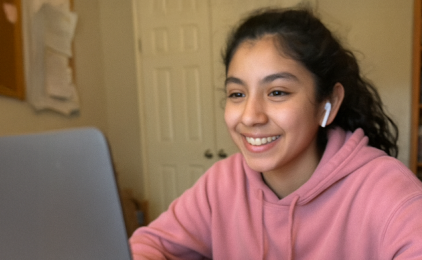
Teacher Resources Available for Sample Space
Discover resources on sample space for students in 7th to 10th grade. Aligned with USA curriculum standards, these materials introduce the concept of sample spaces and their use in probability, helping students calculate outcomes in various scenarios.


.svg)


.svg)


.svg)


.svg)


What’s included in the resources for %%sample space%%?
🔥Curriculum Aligned
Sample space, aligned to USA curriculum standards, equips teachers to teach students about all possible outcomes of a probability event. Teachers can use games or real-life decision-making scenarios to make understanding sample spaces both interactive and practical.
.png)

🌍 Differentiated for Students
Explore sample space by engaging students in probability-based activities like games, experiments, or sports outcomes. These real-life scenarios help students understand all possible outcomes in an event and build a strong foundation in probability theory.
💡Incredible Teacher Resources
The resources for sample space introduce students to the concept of listing all possible outcomes of a probability experiment. Advanced learners are challenged with more complex problems, such as calculating probabilities using the sample space for combined events, ensuring a comprehensive understanding of probability.

Interactive Resources
Practice Questions
Tutero’s teacher resources introduce students to the concept of sample space in probability, showing how to list all possible outcomes of an experiment. Teachers can guide students through practical exercises to help them understand how sample spaces are used to solve probability problems.
Structured Solutions
Differentiated Questions
Tutero’s teacher resources provide sample space problems that encourage students to explore all possible outcomes in probability scenarios. These exercises help students build a clear understanding of probability, preparing them for both classroom assessments and everyday decision-making.
Real-World Applications
Engaging Exercises
Tutero’s sample space resources engage students in calculating possible outcomes for probability-based scenarios, such as rolling dice or flipping coins. These activities enhance students' ability to visualize all possible outcomes in probability experiments.
Access your resources for sample space today!

"I love these resources on sample space"
- You in approximately four minutes
What is covered in the resources for sample space?
Comprehensive Resources for Teaching Sample Space
Our sample space resources, aligned with the USA curriculum, provide teachers with detailed lesson plans, activities, and assessments to introduce students in 7th to 10th grades to the concept of sample space. These materials help students understand how to list all possible outcomes of an experiment or event, forming the foundation for probability theory. Through practical examples, students will learn how to organize and represent sample spaces using lists, tables, and tree diagrams, enabling them to explore the likelihood of various outcomes in real-world scenarios.
Interactive Tools for Exploring Sample Spaces
These resources offer interactive tools that allow students to actively engage in creating sample spaces for different types of experiments, from simple coin tosses to more complex events like rolling multiple dice or drawing cards from a deck. Teachers can guide students through hands-on activities that demonstrate how sample spaces are used to calculate probabilities. By working through these exercises, students will enhance their understanding of how sample spaces provide a systematic way to determine possible outcomes and probabilities.
Advanced Applications of Sample Space in Probability
For more advanced students, the resources delve into complex applications of sample spaces, such as solving problems involving dependent and independent events. Teachers can challenge students with activities that require them to construct and interpret sample spaces for compound events, helping them connect this concept to broader probability theories. By mastering the use of sample spaces, students will be well-prepared to apply probability models in more advanced mathematics and in real-world situations, such as risk assessment and statistical analysis.

Teachers save hours with these resources on sample space


.svg)
.avif)






.svg)


.png)






.png)
.svg)


.png)
.png)
.png)
.png)
.png)
